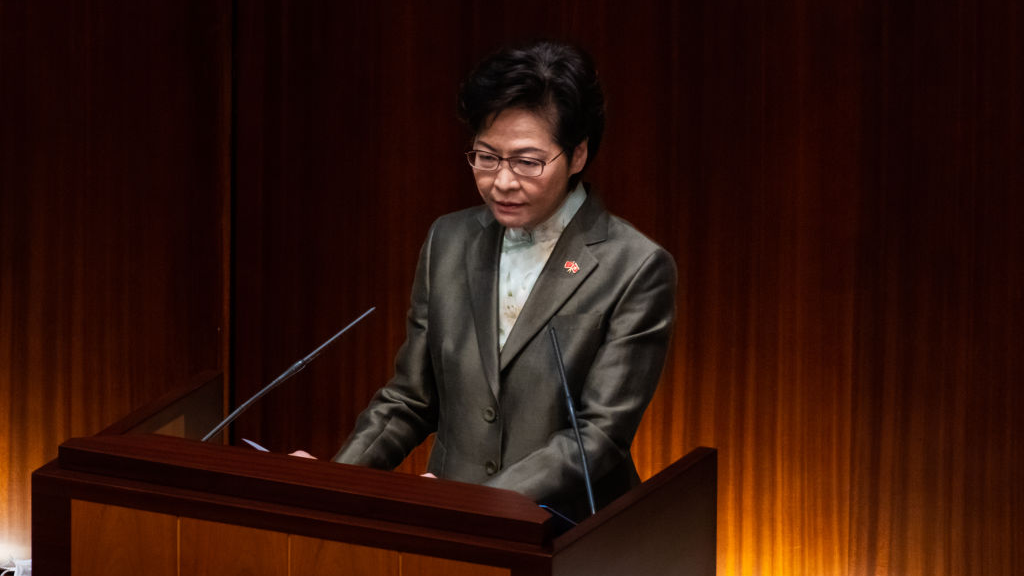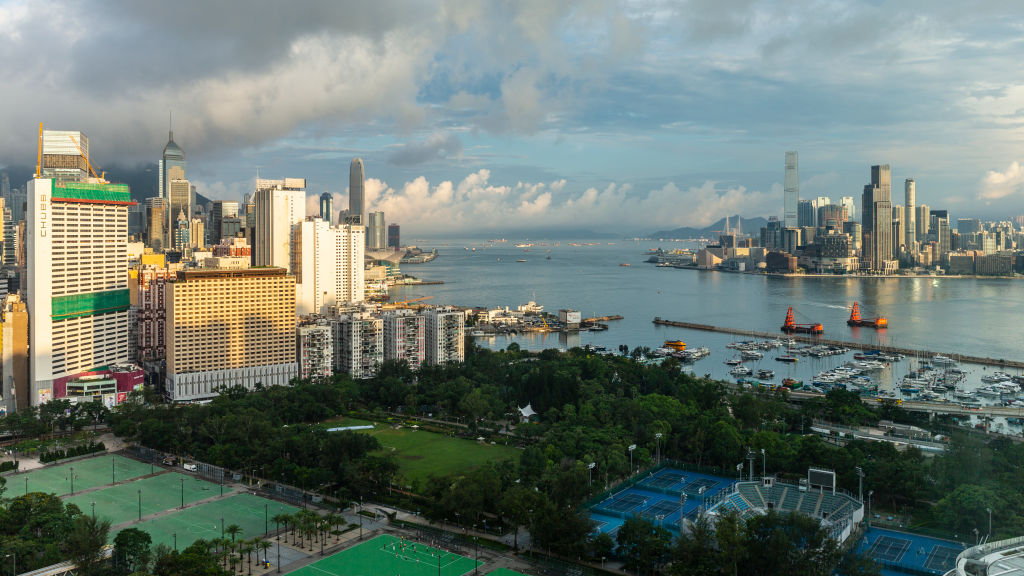
Chief Executive of China's Hong Kong Special Administrative Region Carrie Lam delivers her policy address at the Legislative Council in Hong Kong, China, November 25, 2020. /Getty
Chief Executive of China's Hong Kong Special Administrative Region Carrie Lam delivers her policy address at the Legislative Council in Hong Kong, China, November 25, 2020. /Getty
Editor's note: Zhu Zheng is an assistant professor focusing on constitutional law and politics at China University of Political Science and Law. The article reflects the author's opinion, and not necessarily the views of CGTN.
Chief Executive of China's Hong Kong Special Administrative Region Carrie Lam gave her annual policy address for 2020 on November 25. This is the fourth address by Lam since she took the helm as chief executive, and it is the longest one so far as it encompasses a wide range of topics that are crucial to the city's future development.
The policy address, which was originally slated for October 14, was postponed by Lam's trip to Beijing where she met with China's top leaders. The speech covers a full range of topics ranging from national security issue to further integration with the Chinese mainland to Hong Kong's local issues, of which three are worthy of our particular attention.
First, the pandemic control has been prioritized in Lam's address. Although Lam's visit to Beijing did not immediately result in re-establishing cross-border travel between the city and the mainland, Lam set a goal in her speech to gradually resume the travel – in an orderly manner through mutual recognition of health codes – when the epidemic situation in Hong Kong stabilizes.
Lam said that Beijing demands the Hong Kong SAR government take all measures to guard against the importation of cases and resurgence of domestic infections, with a promise made by the central government to ensure the supply of vaccines for Hong Kong residents when necessary.
Secondly, Hong Kong's local issues have been put high on Lam's political agenda. In addition to land development, housing supply acceleration, and abolishing the tax on buying commercial property, Lam pledged in her speech that her administration will continue to invest in infrastructure and provide economic incentives to the tourist industry.

A general view of the skyline and buildings in Victoria harbor in Hong Kong, China. /Getty
A general view of the skyline and buildings in Victoria harbor in Hong Kong, China. /Getty
For example, Lam revealed that her government is to roll out extra relief measures to invigorate the southern part of Hong Kong Island and build a new metropolis on the man-made island in waters off Lantau Island so that these places will be "full of vibrancy, vigor and velocity for people to work, live, explore new ideas and have fun".
Moreover, when it comes to public spending, Lam warned that it will be difficult to carry on with the current spending level because the government's recurrent expenditure has jumped 34.5 percent in 2020/2021. As a result, the Hong Kong SAR government will have its spending wisely distributed. Lam made clear that more money will be poured into the innovation and technology sector, with an "excellent scholars" scheme to be introduced and more jobs to be created with large-scale IT firms.
Finally, Lam's speech attaches great importance to cross-border integration in the years to come. On the basis of the Guangshengang Express Rail Link (Guangshengang XRL) and the Hong Kong–Zhuhai–Macau Bridge (HZMB), two infrastructure projects that have strengthened ties between the mainland and Hong Kong, Lam's government plans to open the north connection of the Teun Mun-Chek Kok Link, which allows Hong Kong vehicles without a cross-boundary permit to go directly to Guangdong via the aforementioned HZMB.
Besides, the mainland and Hong Kong stock markets will be more closely linked through the Stock Connect Trading Schemes. It would allow more mainland biotechnology firms to be listed in Hong Kong and for stocks to be listed on the mainland's sci-tech innovation board.
The pandemic control, local economy and further integration with the Chinese mainland are the three highlights of Carrie Lam's policy address 2020. The three areas are interconnected as only when the city has recovered from the pandemic, can its economy benefit from further integration with the mainland.
China's focus on "internal circulation" – the innovation-driven cycle of production and consumption within the national border – sets out a new vision for Hong Kong's development. It is for this reason that how well the city would capitalize on its proximity to the Chinese mainland will determine its future.
In the coming year, the central government will continue its staunch support for Hong Kong. As the chief executive rightly concluded, "as long as we stay true to our aspiration in implementing 'One Country, Two Systems'", Hong Kong will surely be able to deal with all problems that arise.
(If you want to contribute and have specific expertise, please contact us at opinions@cgtn.com.)

